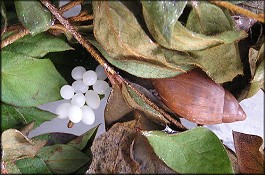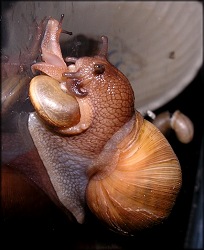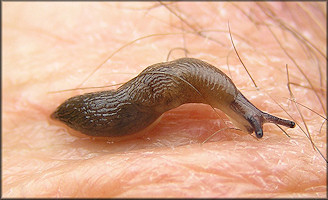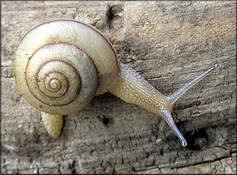| Danger! Snail On The Prowl |
| By Bill Frank |
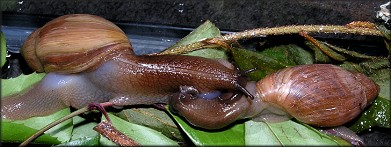 |
|
A pair of Euglandina rosea (Férussac, 1821) mating |
| Here in northeast Florida the
temperature has warmed considerably over the past month, spring is in the
air, and quite likely there is a sex-charged killer is lurking outside
your door. This fearsome beast is none other than the Rosy Wolfsnail [Euglandina
rosea (Férussac, 1821). Euglandina rosea is the largest terrestrial snail found in northeast Florida and is the only of our recorded 70 native species which feeds on other snails. The natural range of this species is the Southeast United States where it can grow to a length of over 60 mm. Henry Augustus Pilsbry (1946 - Land Mollusca of North America (North of Mexico)) recorded a 76 mm. specimen from Palatka but normally the specimens found locally are much smaller (40-50 mm. range). Long recognized by man for its prowess in hunting down and killing other snails, Euglandina rosea has been intentionally introduced to a variety of islands in the Pacific and Indian Oceans, Bermuda, and the Bahamas ostensibly to control undesirable snail species such as the Giant African Snail [Lissachatina fulica (Bowdich, 1822)]. To put it succinctly, these introductions haven’t worked out as they were envisioned. The Euglandina have been blamed for the extinction of endemic species and have been heavily implicated in the extinction or at least decline of other species of snails wherever they have been introduced, notably in Hawaii. |
